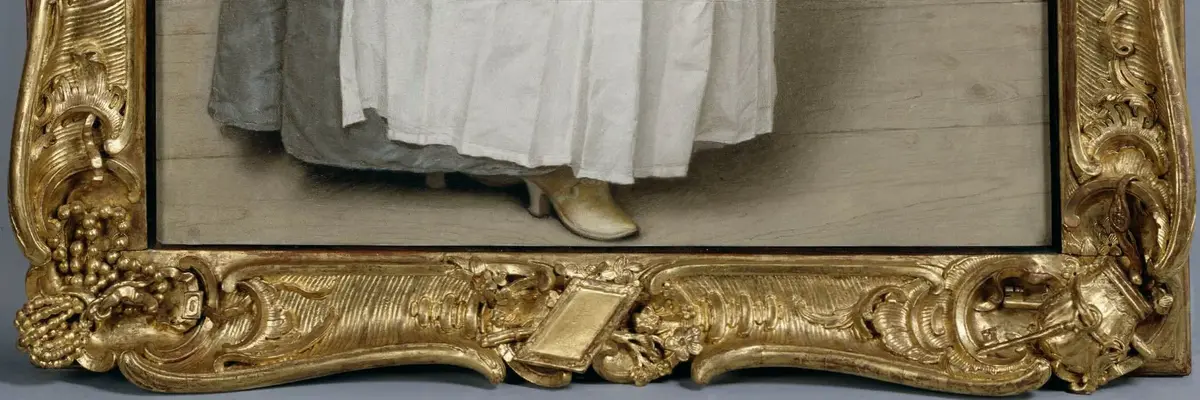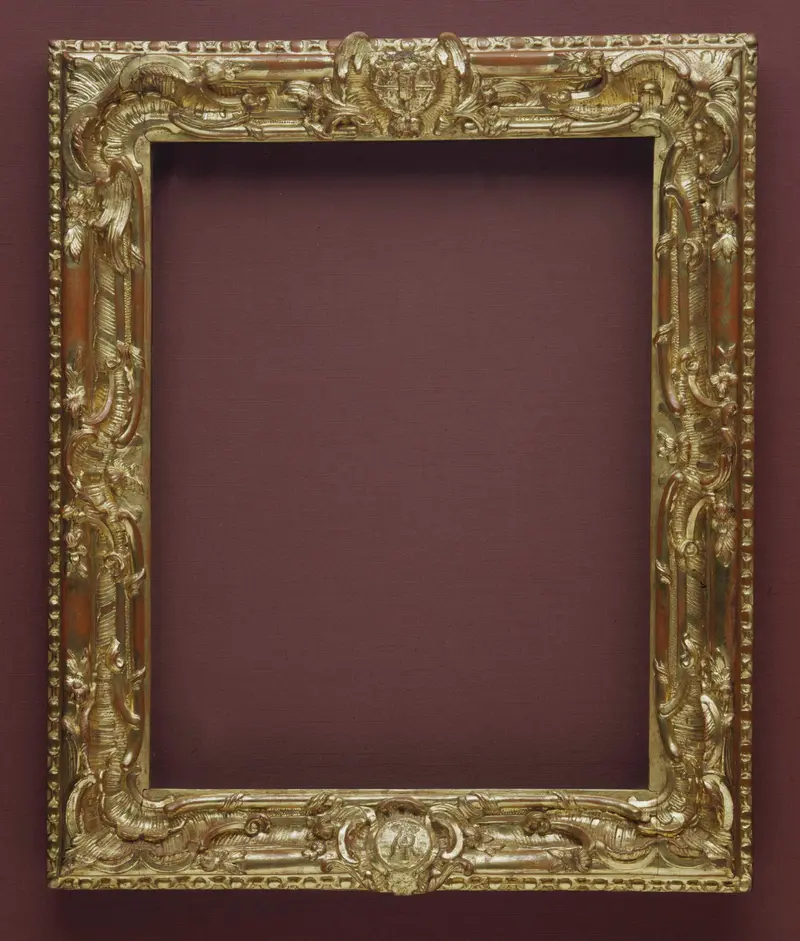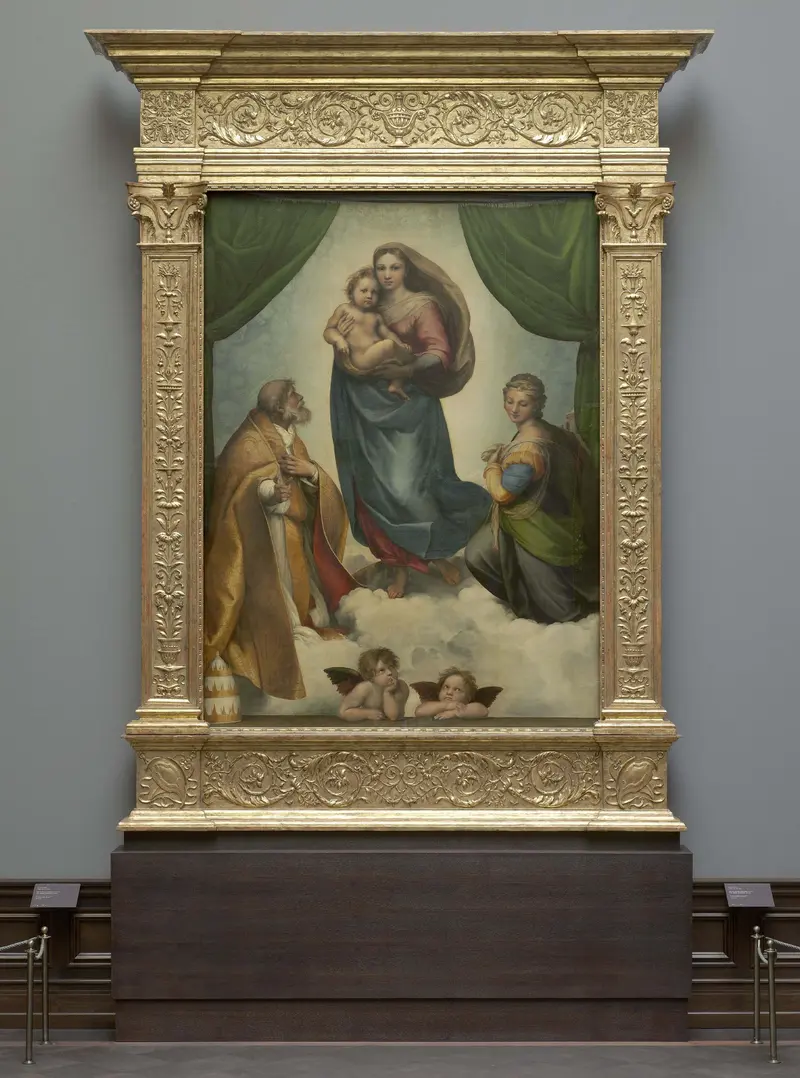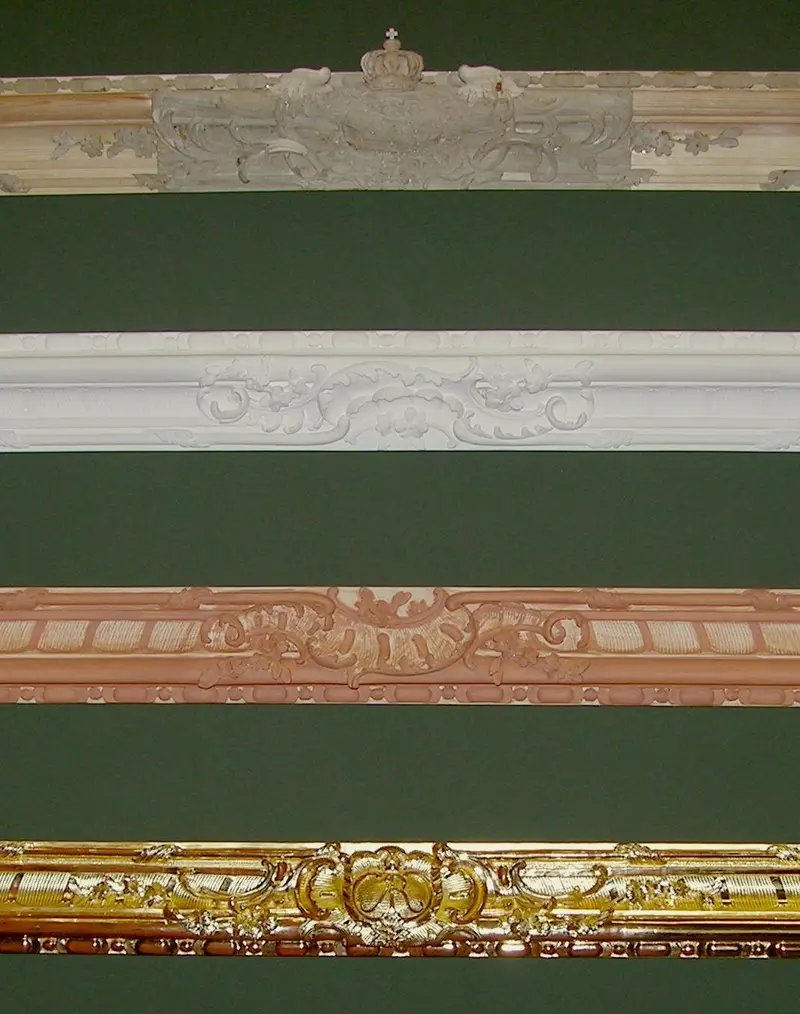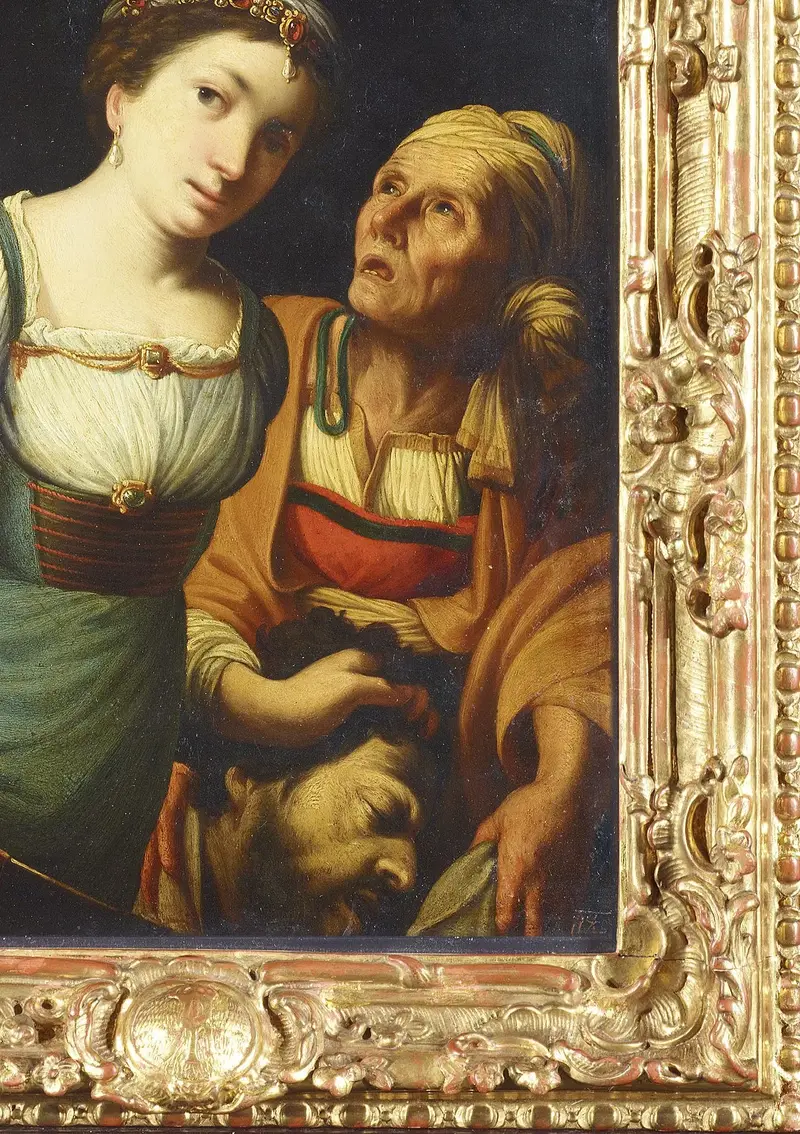[Translate to English:] Rahmung nach Modeneser Ankauf
The paintings in the Dresden gallery have been framed in this characteristic manner since the mid-18th century. The consistent framing of all the paintings was occasioned by the remarkable acquisition of one hundred paintings, mostly by Italian artists, from the collection of Duke Francesco III d’Este, which were brought to Dresden without their frames in October 1746. Work immediately began on producing new frames not only for these one hundred pictures but for the entire collection.
